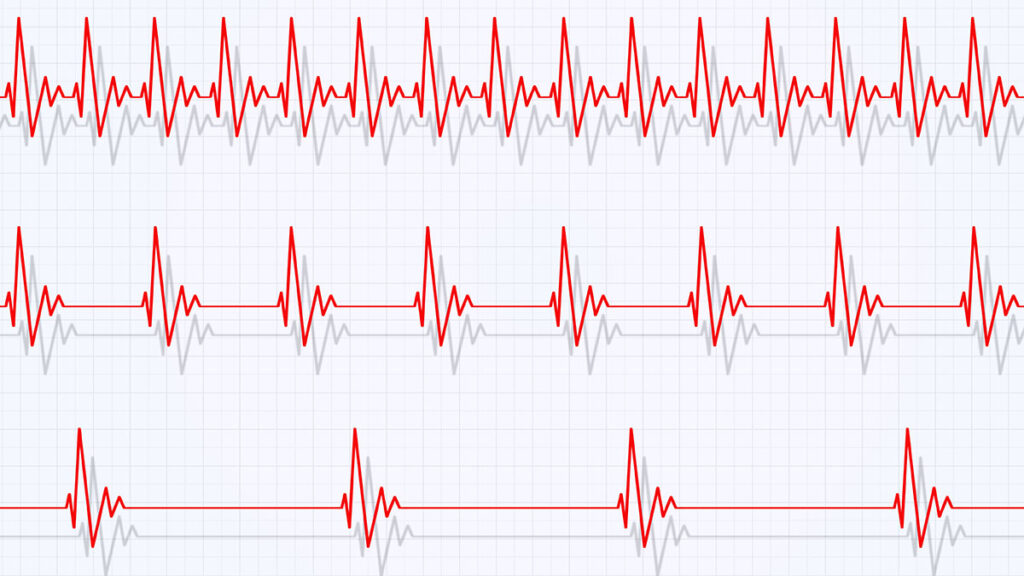Learn about bradycardia, its causes, symptoms, and treatment options. Discover how to manage a slow heartbeat and improve heart health.
What Is Bradycardia?
Bradycardia is a condition characterized by a slower-than-normal heart rate, typically defined as fewer than 60 beats per minute. While a low heart rate can be normal for athletes and highly fit individuals, in others, it may indicate an underlying issue with the heart’s electrical system. Bradycardia can lead to insufficient blood flow to the brain and other vital organs, causing symptoms such as dizziness, fatigue, and fainting.
The condition may be temporary or chronic and is often associated with age-related changes or underlying health conditions. Understanding the causes and symptoms of bradycardia is key to determining the most effective treatment options.
Common Causes of Bradycardia
Bradycardia can result from a variety of factors, including lifestyle, medical conditions, and medications. Here are some of the most common causes:
- Sinoatrial (SA) Node Dysfunction: The SA node is the heart’s natural pacemaker. When it doesn’t function properly, it can cause a slow or irregular heartbeat.
- Heart Block: A disruption in the electrical signals between the atria and ventricles can slow the heart’s rhythm. This can range from mild (first-degree block) to severe (third-degree block).
- Aging: Natural wear and tear of the heart’s electrical system is a common cause of bradycardia in older adults.
- Medications: Drugs such as beta-blockers, calcium channel blockers, and certain antiarrhythmics can slow the heart rate as a side effect.
- Electrolyte Imbalances: High or low levels of potassium, calcium, or magnesium can disrupt normal heart function.
- Underlying Conditions: Conditions such as hypothyroidism, sleep apnea, or inflammatory diseases like myocarditis can contribute to bradycardia.
Symptoms of Bradycardia
Not everyone with bradycardia experiences symptoms. However, when symptoms occur, they may include:
- Fatigue or weakness
- Dizziness or lightheadedness
- Shortness of breath, especially during physical activity
- Fainting (syncope) or near-fainting episodes
- Chest discomfort or palpitations
- Confusion or difficulty concentrating
If you experience any of these symptoms, it is important to consult your healthcare provider promptly. Severe bradycardia can lead to complications such as heart failure or sudden cardiac arrest if left untreated.
Diagnosing Bradycardia
Diagnosing bradycardia typically involves a combination of medical history, physical examination, and diagnostic tests. Common diagnostic tools include:
- Electrocardiogram (ECG): An ECG records the heart’s electrical activity, helping to identify abnormalities in rhythm.
- Holter Monitor: A portable device worn for 24 to 48 hours to continuously monitor heart rate and rhythm.
- Implantable Loop Recorder (ILR): A small device implanted under the skin that provides continuous long-term monitoring, particularly useful for diagnosing infrequent arrhythmias.
- Electrophysiology (EP) Study: A specialized test to map the heart’s electrical pathways and identify issues.
Treatment Options for Bradycardia
The treatment for bradycardia depends on its underlying cause and severity. Options may include:
- Lifestyle Changes: Managing stress, staying hydrated, and avoiding excessive alcohol or caffeine can help reduce symptoms in mild cases.
- Medication Adjustments: If medications are causing bradycardia, your doctor may adjust the dosage or switch to an alternative treatment.
- Pacemaker Implantation: For chronic or severe bradycardia, a pacemaker may be implanted to regulate the heart’s rhythm. This small device delivers electrical impulses to maintain a normal heart rate.
- Treating Underlying Conditions: Addressing contributing factors like hypothyroidism or sleep apnea can resolve or improve bradycardia.
- Emergency Treatment: In acute cases, intravenous medications or temporary pacing may be required to stabilize the heart rate.
Living with Bradycardia
With proper treatment and management, many individuals with bradycardia lead active, healthy lives. Here are some tips for managing the condition:
- Follow Up Regularly: Regular check-ups with your healthcare provider are essential to monitor heart health and adjust treatments as needed.
- Monitor Symptoms: Keep track of any new or worsening symptoms and report them to your doctor promptly.
- Stay Active: Engage in light to moderate physical activity as advised by your doctor to improve overall cardiovascular health.
- Know Your Limits: Avoid activities that cause dizziness or fatigue, and always prioritize safety.
- Carry Medical Identification: If you have a pacemaker or other treatment, wearing a medical ID can be helpful in emergencies.
If you are interested in taking the first step to managing your bradycardia, book your initial consultation with Dr. Adam Buzikowski today.
A Riley Publication
Medically Reviewed By: Adam Budzikowski, MD, PhD
